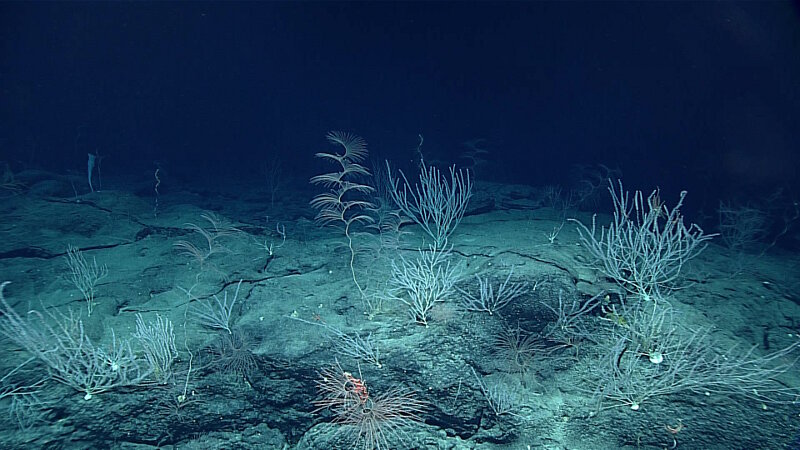Dive 14 occurred on the Pigafetta Seamount. This was the first of three dives to explore a series of guyots, which are flat-topped seamounts. This guyot is quite old, with an estimated age that dates to the Cretaceous Period (65.5-145.5 million years ago). Because of its age, seamounts like these have amassed thick ferromanganese crusts that are of commercial interest due to their composition of metals. Seafloor areas to the east that contain similar ferromanganese crusts are currently being leased for deep-sea mining, and we were interested in exploring some of these seamounts to provide a baseline characterization of their biota and habitat in advance of any future mining activities. After descending to the bottom at 2,004 meters, we landed in an area of heavy sediment, with ripple marks. We found some loose manganese-encrusted rocks and collected one. As we moved up the slope, we found spectacular coral and sponge communities on a seafloor of smoothly rounded, low-relief mounds with heavy manganese encrustation and moderate sediment cover. We saw a wide variety of chrysogorgid, primnoid, and isidid corals, many of which had commensal organisms living on them, such as squat lobsters, barnacles, and anemones. We also saw sea urchins, cladorizhid sponges living commensally on a dead sponge stalk, an acorn worm (enteropneust), a tunicate (Culeolus sp.), and a polynoid scale worm. We saw numerous cutthroat eels (Synaphobranchus sp.) and a sea toad (Chaunacidae, related to anglerfish). We collected a Bolosominae sponge and an isidid coral with unusual veining on the branches, likely to both be new species.
